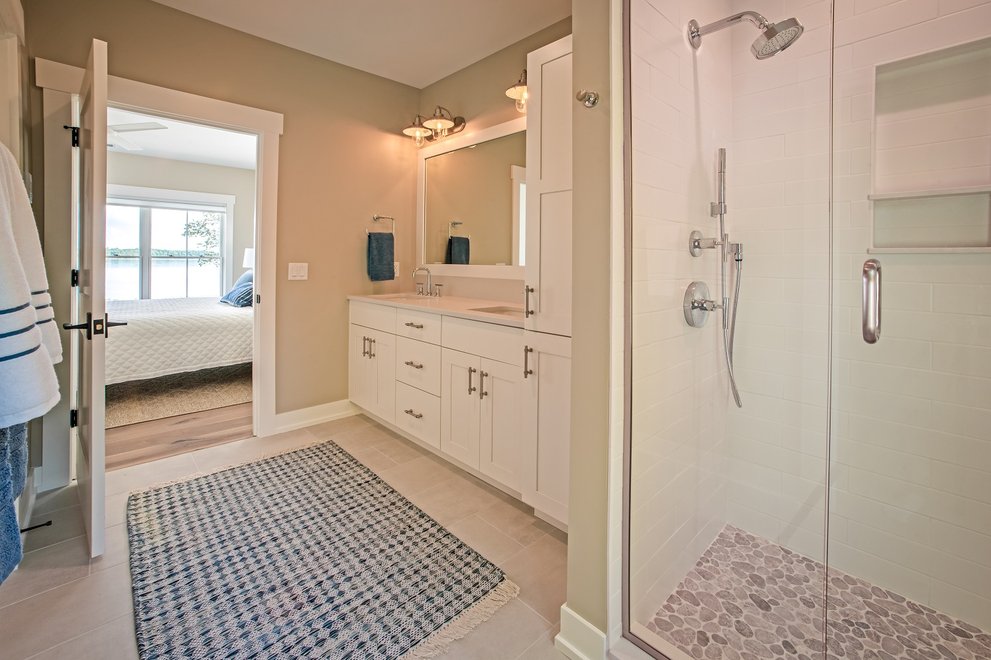These days when people say they want radiant heat, they
are generally talking about in-floor radiant heat, and though traditional
radiators are radiant heat as well – in this post we will use the shorthand
radiant for in-floor radiant. There are two basic types of radiant heat:
Hydronic and Electric. Which you use will primarily be an issue of scale.
Hydronic is too expensive to install in a small space, and electric is too
expensive to operate on a large scale. So, whole house: hydronic, bathroom:
electric. Hydronic means pipes filled with hot water circulate under the floor,
while electric use resistance heating wire installed under the floor. In this
post I will tell you what to know before you decide to add electric radiant
heat to one of the rooms in your home.
candidate for radiant heat. Kenny Grono is a residential contractor in the Philadelphia region.
- Electric radiant works best under tile or stone. Most manufacturers will only warranty this type of installation. These materials have the thermal mass to absorb the heat and slowly release it without deforming the floor material. Nine times out of ten, the room where a homeowner wants warm tile underfoot is the bathroom. Perhaps a mudroom or a small kitchen, there are even electric radiant products intended to melt snow from your sidewalk or driveway, but most installs are in bathrooms, and this is the most complicated place to install this product so I will concentrate on a bathroom install.
- Electric radiant should not be used as the sole source of heat in a room. A room in the middle of a heated house in certain climates might be able to get away with no other source of heat, but the manufacturers don’t recommend this and neither do I. It’s a lot harder to add heat once a room is completely remodeled and you find out it’s too cold. Radiant heat in this case is there to make the room more comfortable. Walking on warm tile barefoot in the Winter is a luxury. If your feet are warm, you’ll feel warm. In floor radiant is the ideal way to heat. Hydronic systems can be the sole heat source, but electric systems can’t keep up on a cold day.
- Different manufacturers vary in how the installation goes, but there are a few constants. There is always a wire that winds back and forth under the floor. Sometimes it will be attached to a mesh that can be cut, sometimes the wire is loose, sometimes it is encased in a mat that can’t be altered. There will be a thermostat. A GFCI protected programmable thermostat is ideal. It’s not cheap to heat any space with electricity, so a programmable thermostat allows you to heat the floor when you are most likely to be in the room. If you want a warm shower floor or shower bench, you will need to purchase a different mat made for a shower.
- Before ordering, you will need to know the exact layout of the room. Since the built version of a room can differ from the plans, and every inch counts here, I recommend waiting until the plumbing is roughed in and the subfloor is installed to confirm the layout. You will need a licensed electrician and a good tile setter, and both should be consulted on the right type of radiant mat. The total size, ability to be altered, and location where the wires exit the mat are all important considerations. When the electrician roughs in the electric for the mat, it will need to be an independent circuit, you can’t tap into a circuit that serves other uses. A probe (basically a wire with a temperature sensing bulb at the end, runs from the thermostat to a spot under the floor (and not close to the heat wires). We always install two of these. If anything is going to fail someday, this and the thermostat are the most likely. If you spend another $10 now, you can avoid pulling up the tile floor if that happens. Draw the mat on a plan of the bathroom or directly on the floor. Where does it start, where does it end. No space where you will stand should be more than 2” away from a part of the heating wire. Keep the heat away from the wax ring on the toilet. Don’t run the mat under furniture with a closed toekick.
- The probe wires and leads feeding the heat wires should be run in separate conduit pipes in the wall so they don’t interfere with one another. Each mat will come with instructions for testing the resistance of the wire, before, during and after installation. This is how you know whether the wire is cut during install, as well as where it happened. Make sure this step is taken seriously. Once this is under your floor you can’t make adjustments.
- The radiant wire is embedded in thinset before tile install starts. Once that dries, more thinset is added and the tile is set. Now set the thermostat, take off your shoes, and enjoy your new warm floor.
candidate for radiant heat. Kenny Grono is a residential contractor in the Philadelphia region.






